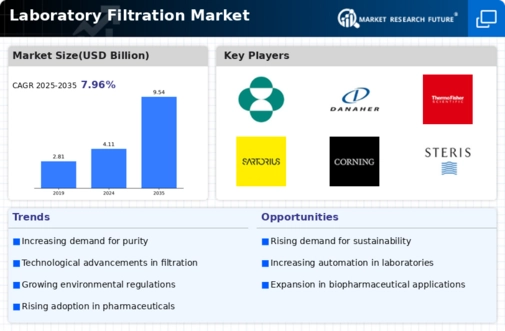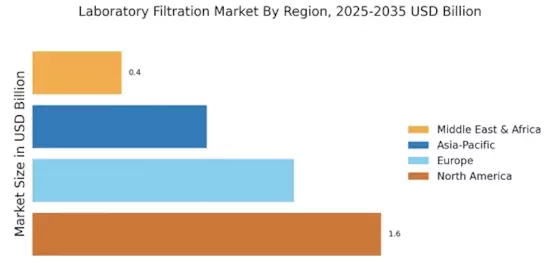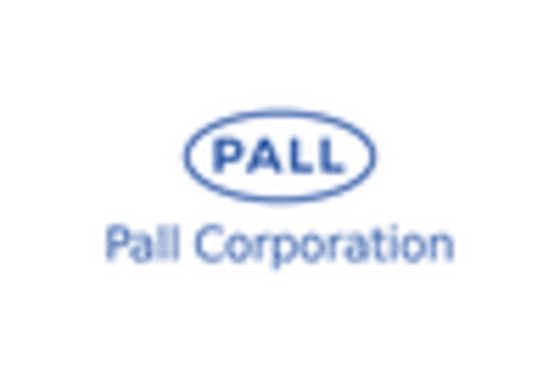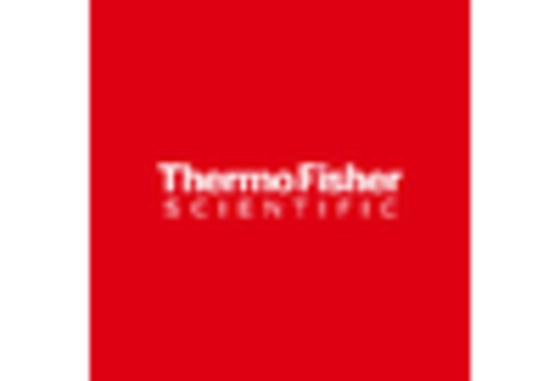Growing Environmental Concerns
The Laboratory Filtration Market is increasingly shaped by growing environmental concerns and the push for sustainable practices. Laboratories are under pressure to minimize waste and reduce their environmental footprint, leading to a demand for eco-friendly filtration solutions. This trend is reflected in the rising popularity of reusable filtration products and sustainable materials. The market for sustainable laboratory products is projected to grow at a CAGR of 9% through 2025, indicating a shift towards environmentally responsible practices. As laboratories strive to align with sustainability goals, the Laboratory Filtration Market is likely to benefit from the adoption of greener filtration technologies.
Increased Focus on Quality Control
The Laboratory Filtration Market is significantly impacted by the heightened focus on quality control across various industries. As regulatory bodies impose stricter guidelines regarding product safety and quality, laboratories are compelled to adopt advanced filtration systems to ensure compliance. This trend is particularly evident in the pharmaceutical and food industries, where the integrity of products is paramount. The market for quality control solutions is expected to grow substantially, with an estimated increase of 8% annually through 2025. This emphasis on quality control is likely to drive the Laboratory Filtration Market, as laboratories seek reliable filtration methods to maintain high standards.
Rising Demand for Biopharmaceuticals
The Laboratory Filtration Market is experiencing a notable surge in demand due to the increasing production of biopharmaceuticals. As biopharmaceuticals require stringent filtration processes to ensure product purity and safety, laboratories are investing in advanced filtration technologies. The market for biopharmaceuticals is projected to reach approximately USD 500 billion by 2025, which is likely to drive the need for efficient filtration solutions. This trend indicates that laboratories are prioritizing high-quality filtration systems to meet regulatory standards and enhance product efficacy. Consequently, the Laboratory Filtration Market is poised for growth as biopharmaceutical companies seek reliable filtration methods to support their manufacturing processes.
Emergence of Advanced Filtration Technologies
The Laboratory Filtration Market is witnessing a transformation due to the emergence of advanced filtration technologies. Innovations such as membrane filtration, microfiltration, and ultrafiltration are becoming increasingly prevalent, offering enhanced efficiency and effectiveness in various laboratory applications. These technologies are designed to meet the growing demands for high-purity products and are essential in sectors like pharmaceuticals and food and beverage. The market for membrane filtration alone is projected to grow at a CAGR of over 10% through 2025, indicating a robust demand for advanced filtration solutions. This trend suggests that laboratories are increasingly adopting cutting-edge technologies to improve their filtration processes.
Growth in Research and Development Activities
The Laboratory Filtration Market is significantly influenced by the expansion of research and development activities across various sectors, including pharmaceuticals, biotechnology, and environmental science. Increased funding for R&D initiatives is leading to a higher demand for laboratory filtration products, as researchers require efficient filtration systems to ensure the integrity of their experiments. According to recent data, R&D spending in the pharmaceutical sector alone is expected to exceed USD 200 billion by 2025. This growth in R&D activities is likely to propel the Laboratory Filtration Market, as laboratories seek innovative filtration solutions to support their scientific endeavors.


















Leave a Comment